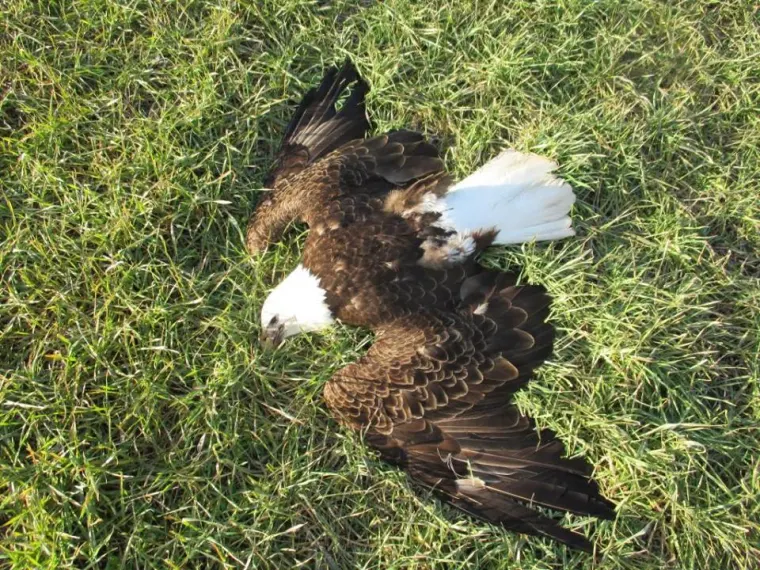Wildlife experts partially solved the mystery behind the death of 13 bald eagles, but they still don’t know who the culprit responsible is.
The eagles, some who were so young that they still hadn’t grown their white head feathers, were poisoned by carbofuran, a deadly pesticide.

According to Cornell Lab of Ornithology, the pesticide is so deadly that a single granule is enough to kill a small bird. The use of the liquid pesticide on food crops was banned by the Environmental Protection Agency in 2009.
However, according to toxicologist Karyn Bischoff of Cornell University’s Animal Health Diagnostic Center, many people may still have aging containers of the pesticide in their sheds.
In February 2016, a man looking for deer antlers on Maryland’s eastern shore stumbled upon four of the 13 dead bald eagles. He called the Maryland Natural Resources Police, who investigated the Federalsburg site and discovered nine more dead birds.

The U.S. Fish and Wildlife Service spent six months investigating the birds’ deaths, interviewing over a dozen landowners and property managers near the scene of the crime.
John LaCorte, a special agent with the Fish and Wildlife Service, stated that “there was no smoking gun.”
“It’s very frustrating,” he told The Washington Post.
According to EPA, the pesticide once killed up to two million birds annually, and the pellet form of carbofuran was banned in the mid 1990s. Bald eagles were still on the endangered species list at the time.

While the pesticide is banned, farmers seem to be using it to kill animals that eat plants (such as illegally grown marijuana) and livestock, according to The Washington Post.
According to Bischoff, when animals consume the pesticide, “it’s a pretty ugly way to die.”
The CDC states that if ingested or inhaled, the pesticide can cause muscle cramps, excessive salivation, dizziness, vomiting, labored breathing and even unconsciousness. Bischoff stated that it can also prompt the glands in the lungs to secrete fluids, so that the animals “drown in their own fluids.”

The Fish and Wildlife Service performed necropsies (animal autopsies) on six of the 13 eagles, and a dead raccoon (Procyon lotor) found nearby.
Each of the six birds had carbofuran in their stomachs or crops, and the raccoon tested positive as well.
LaCorte stated that it was entirely possible that one of the bald eagles brought the raccoon from somewhere else and carried it to the farm in Federalsburg, where the other birds dined on the deadly meal.










